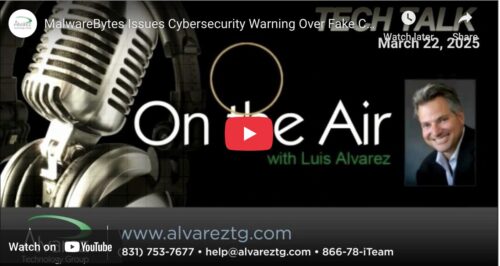USPS Warns of Increased Phishing Scams: Stay Alert and Informed
Recently, the United States Postal Service (USPS) has been facing an increase in phishing scams. As a customer, you must be aware of these malicious attempts that primarily target your private information. These scams often come in the form of deceptive emails, texts, and even social media messages, claiming to be from USPS or other major mail carriers.
Being informed is the first step to protecting yourself against these ongoing phishing scams. These attacks may involve a fake package delivery notification, a request for outstanding postage fees, or even a message about a parcel you never ordered. Understanding the warning signs and methods scammers use, you can better secure your data and prevent potential losses.
To ensure your security and avoid falling victim to scammers, it’s crucial to remain vigilant and up-to-date with the latest phishing trends and safety measures. Take the time to learn more about common tactics and be cautious when interacting with emails, texts, or messages that appear to be from USPS or other delivery services.
Identifying Phishing Scams
Common Characteristics
Phishing scams often have common characteristics that can help you identify them more easily. These may include:
- Generic greetings: Scammers often use impersonal greetings like “Dear Customer” or “Dear User” instead of addressing you by name.
- Urgent language: Phishing emails typically try to create a sense of urgency, compelling you to act immediately. They might do this by claiming that your account has been hacked or that you must confirm your personal information.
- Too-good-to-be-true offers: Scammers may try to lure you in with enticing offers or promotions that seem too good to be true – because they often are!
- Grammatical errors: Be vigilant for spelling and grammar mistakes, as many phishing scams originate from non-native English speakers.
- Suspicious URLs: Scammers often use domain names that look similar to legitimate URLs. Always double-check the URL before clicking on a link or entering personal information.
Phishing Techniques
There are several common phishing techniques scammers employ, and recognizing them can help you protect yourself:
- Email spoofing: Scammers can make an email appear as if it’s coming from a legitimate sender, such as USPS, by manipulating the “From” address in the email header. Always be cautious when you receive an email from an unknown sender or with a suspicious email address.
- Fake websites: Some phishing attacks involve directing you to a fake website that imitates the look and feel of a genuine service, like USPS. Before entering your credentials on a website, verify that it has the correct URL and is secure (all legitimate websites should use HTTPS).
- Attachment phishing: Cybercriminals may attach files to an email that contain malware or spyware. Avoid opening attachments from unknown senders or if you were not expecting to receive a message.
By being aware of the common characteristics and techniques used in phishing scams, you can better protect yourself and your personal information. Stay vigilant, double-check URLs, and remember that if something seems too good to be true, it probably is.

Impact on USPS Customers
Fraud Cases
Phishing scams targeting USPS customers can lead to an increase in fraud cases. When you receive an email or message that appears to be from USPS, it’s important to verify its authenticity. Cybercriminals may trick you into sharing your personal or financial information, which can result in unauthorized transactions or identity theft. To protect yourself and your accounts, never share your sensitive information through email, text messages, or unsecured websites.
Customer Trust Issues
USPS phishing scams can also hurt the organization’s reputation and lead to customer trust issues. As a customer, you may become hesitant to use USPS services or interact with their online platform due to the fear of scams. This can negatively impact both the business and its clients. Remember, the best defense against phishing scams is to stay informed and be cautious when dealing with communications that seem suspicious or out of the ordinary.
To help you identify and avoid scams, USPS provides valuable resources and guidelines on its official website. By staying vigilant and informed, you can protect yourself from the consequences of phishing scams.
USPS’s Response to Phishing Scams
Preventive Measures
The USPS takes phishing scams seriously and has implemented various preventive measures to combat them. They have established a Corporate Information Security Office that actively monitors for potential cyber threats. When a threat is identified, they work diligently to address and mitigate it.
In addition, USPS employees receive regular training on the latest cybersecurity best practices. This includes recognizing phishing emails, using strong passwords, and staying vigilant to protect sensitive information.
Customer Education Initiatives
Awareness is key to preventing phishing scams. The USPS actively engages with customers to educate and inform them about these threats. They offer various resources, such as articles and videos, to help you understand the risks and ways to protect yourself. Some examples include:
- Online resources: The USPS website features helpful information on identifying and reporting phishing scams, ensuring you have the necessary knowledge to protect your personal information.
- Alerts: The USPS issues timely alerts on ongoing phishing scams, helping you stay informed and aware of current threats.
- Tips for safe browsing: The USPS provides practical advice on safe online behavior, such as using secure connections, keeping software up to date, and being cautious with links and downloads.
By staying informed about phishing scams and following the USPS’s preventive measures and advice, you can significantly reduce your risk of falling victim to these cyber threats.
How Customers Can Protect Themselves
As USPS is warning about increased phishing scams, customers need to protect themselves. In this section, we will discuss some best practices and reporting procedures.
Best Practices
To ensure your safety and security, follow these best practices:
- Be cautious with unsolicited emails: If you receive an email claiming to be from USPS, but you weren’t expecting it, don’t click any links or open attachments. Hover over the link to see the actual destination before clicking.
- Verify the sender’s identity: Check the sender’s email address and look for any typos or inconsistencies. Official emails from USPS will come from @usps.gov addresses.
- Use secure websites: When you need to access your USPS account or track packages, always use the official website https://www.usps.com.
- Update your software: Keep your devices and antivirus software updated to ensure you’re protected against the latest threats.
- Use unique and strong passwords: Create a unique and complex password for each account to prevent unauthorized access. Enable two-factor authentication (2FA) when available.
Reporting Procedures
If you suspect you’ve received a phishing email, follow these steps to report it:
- Don’t respond or click on links: Avoid clicking on any links or replying to the email.
- Report it to USPS: Forward the suspicious email to the USPS CyberSecurity Operations Center at CyberSafe@usps.gov. Include “Phishing Email” in the subject line.
- Report to the Anti-Phishing Working Group: Forward the email to reportphishing@apwg.org.
- Delete the email: After reporting the phishing email, delete it from your inbox to prevent accidental clicks.





